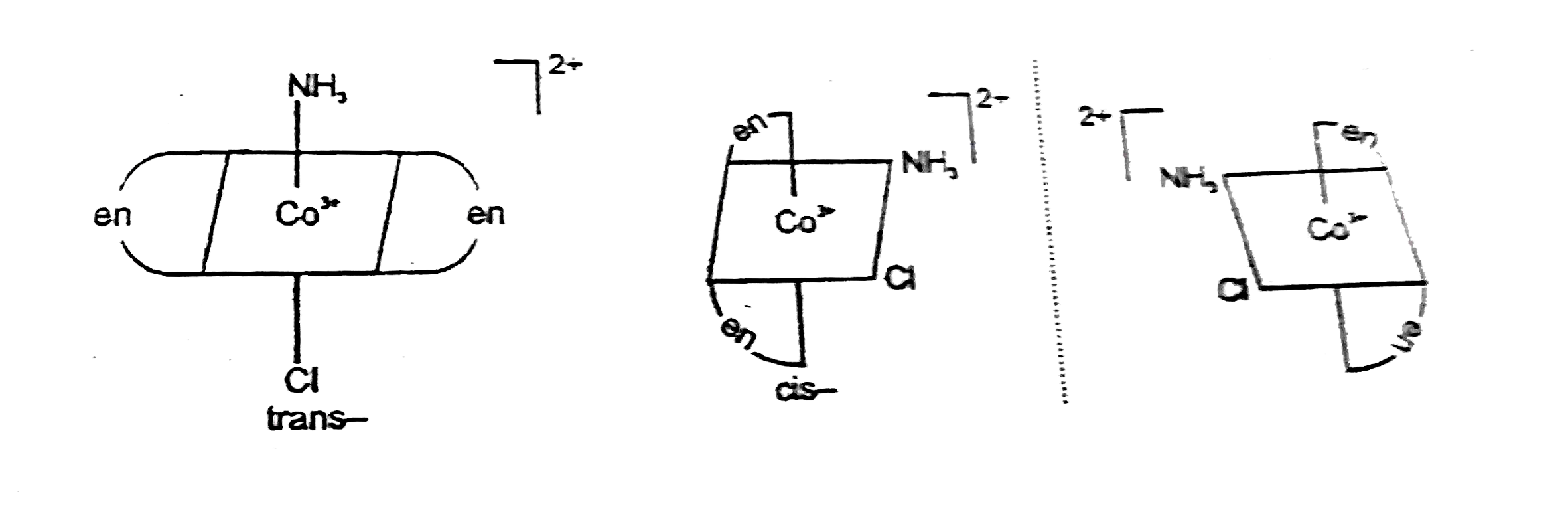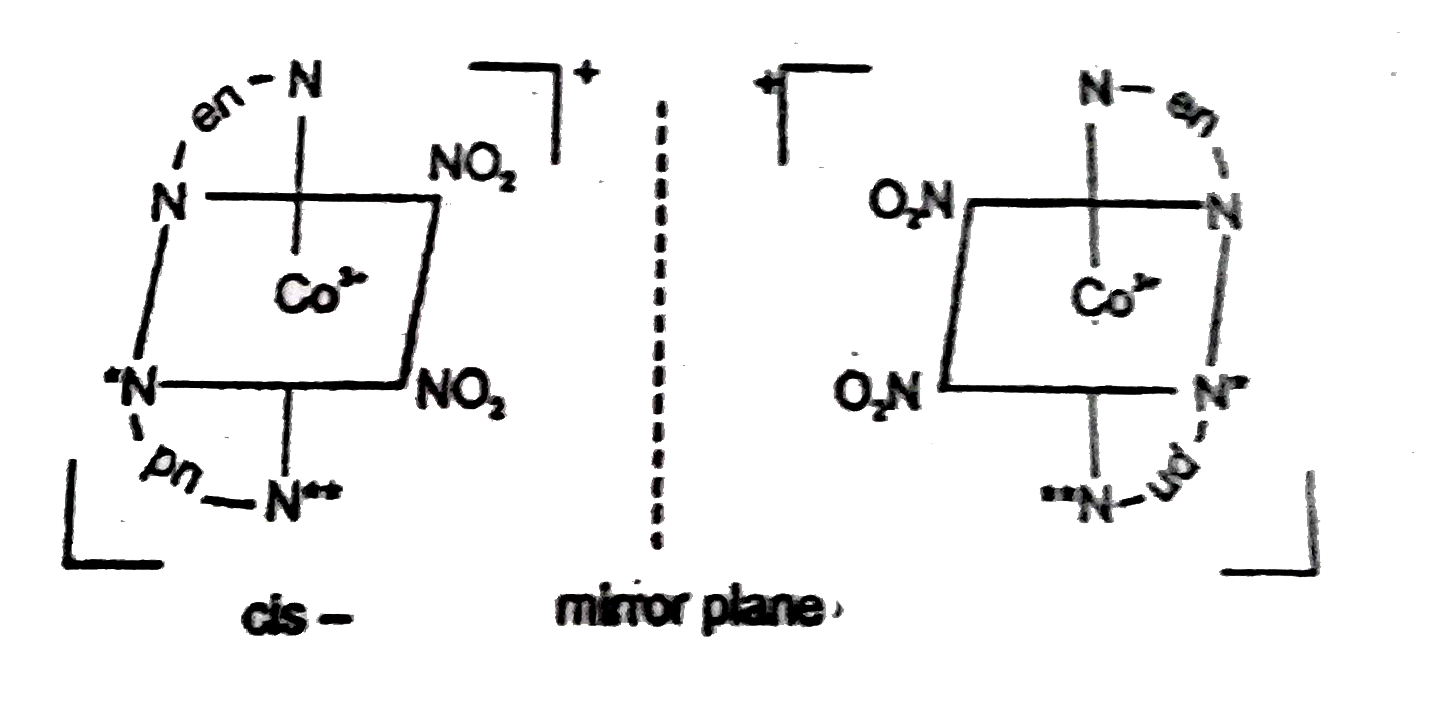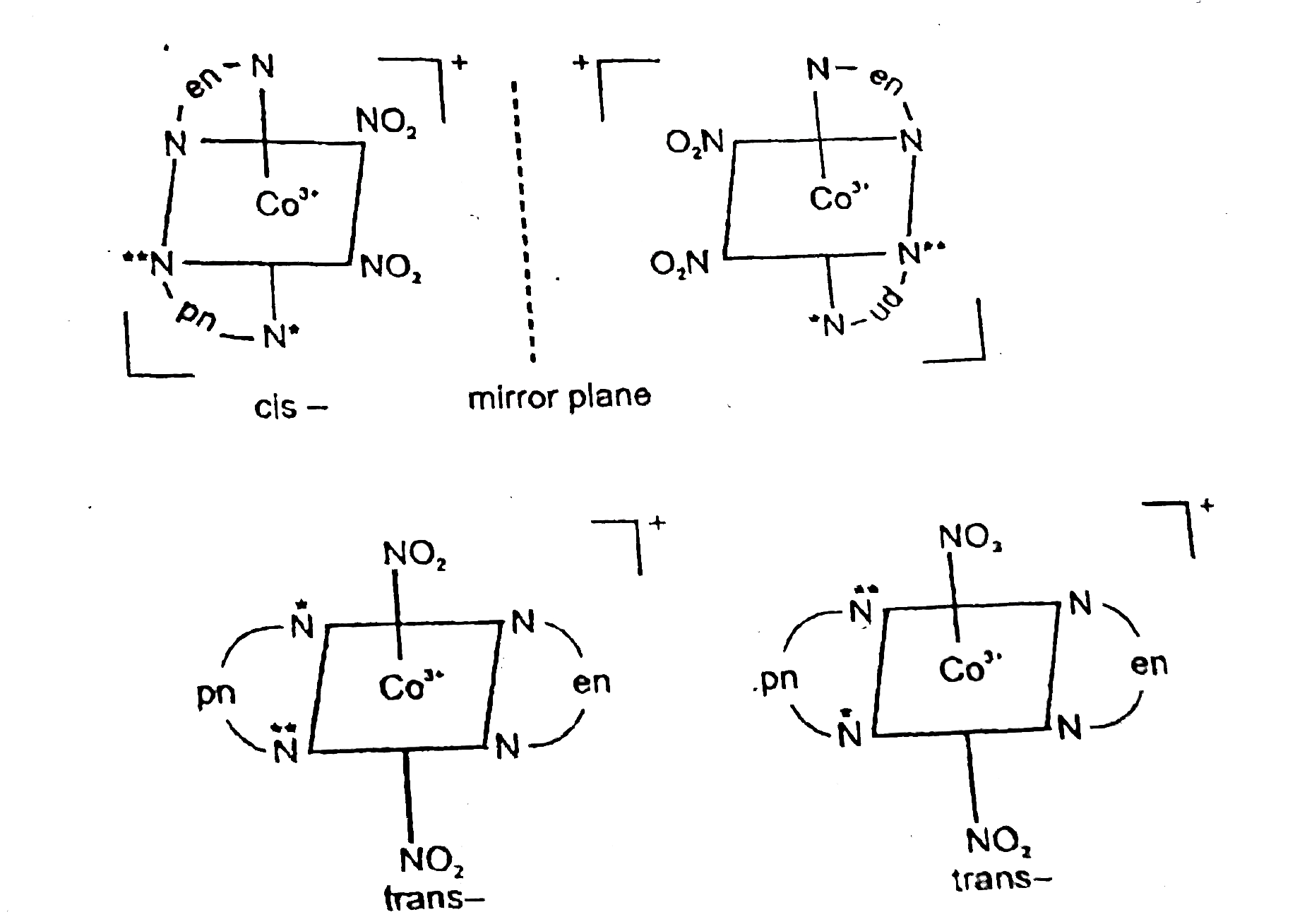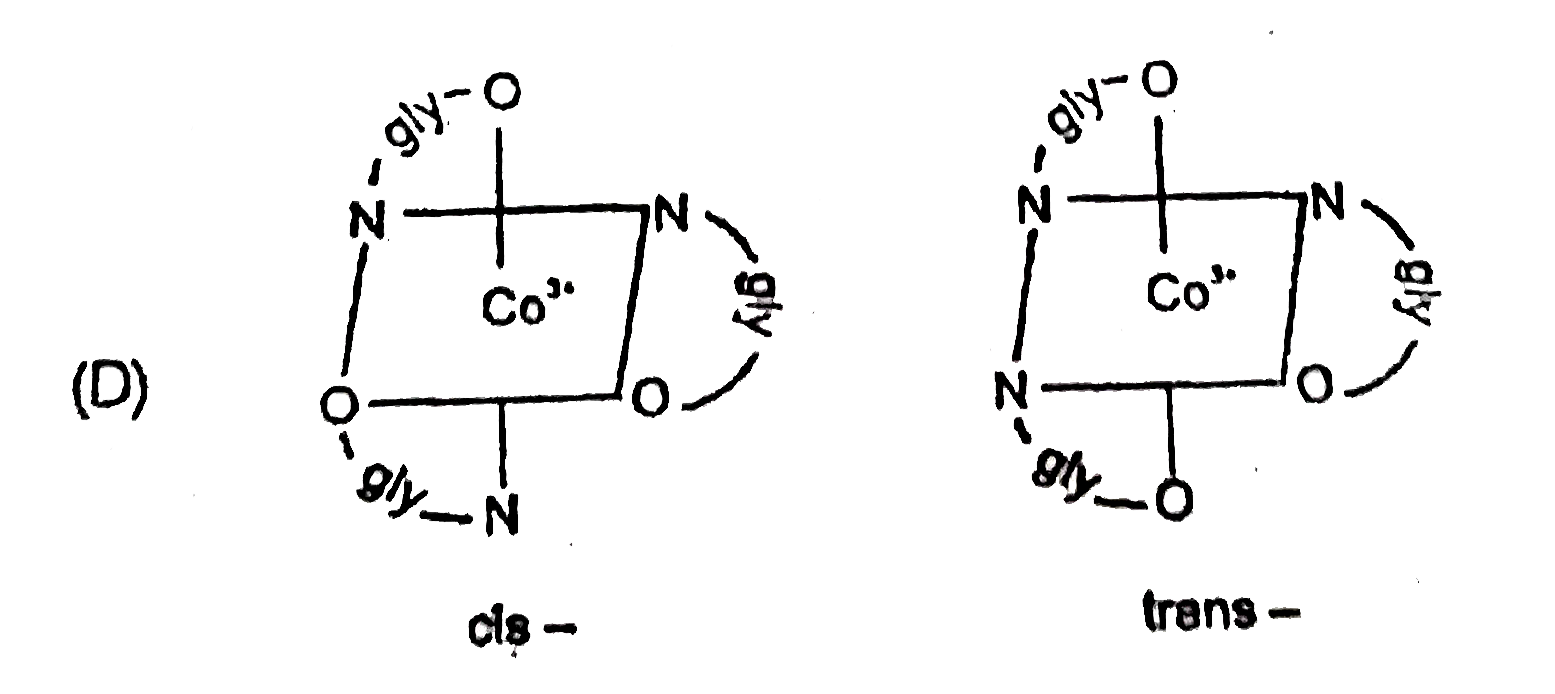InterviewSolution
Saved Bookmarks
| 1. |
There are some coordination compounds given in column-I which may exist in different isomeric forms as given in column-II.Select the option for the coordination compounds and their respective isomeric forms. {:("Column-I","Column-II"),((A)[Co(en)_2NH_3Cl]SO_4,(p)"Optical isomer"),((B)[Co(NH_3)_4(NO_2)_2](NO_3),(q)"Geometrical isomer"),((C)[Co(en)(pn)(NO_2)_2]Cl,(r)"Ionization isomer"),((D )[Co(gly)_3], (s)"Linkage isomer"),(" " , (t)"Hydrate isomer"):} |
Answer»  Note: TRANS-form has a centre of symmetry and several planes of symmetry, but the cis-form has neither. (B)Has total 10-isomeric forms including linkage (`NO_2`- ambidentate ligand), ionisation (exchange of `NO_2^-` and `NO_3^-` ), geometrical isomers (cis- and trans-) Compound is optically inactive as cis-as well as trans-forms possess at least one PLANE of symmetry Linkage through either O- and N- give RISE to linkage isomerism.   Thus EXISTS in two trans-and two cis-isomers and each of cis-isomers show optical isomerism.  Both cis- and trans- isomers have each a pair of optical isomers because the absence of any one of symmetry ELEMENTS. |
|